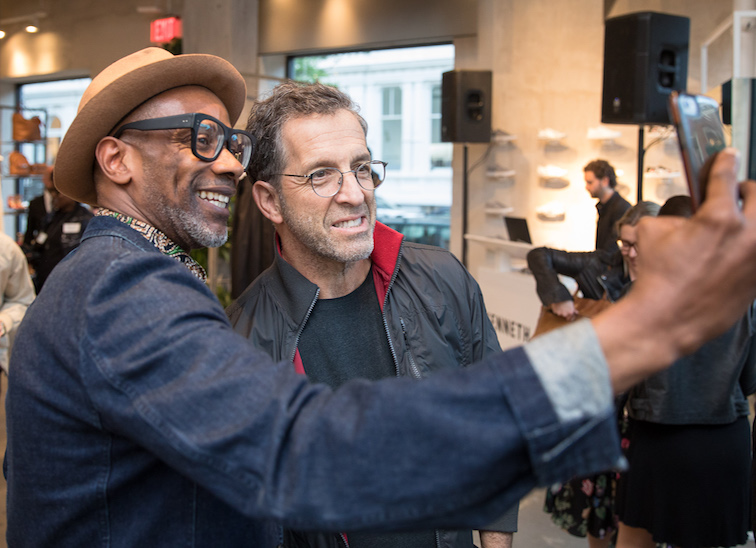A Star-Studded Debut for SAGE Table
Posting live on May 18, 2017, Whoopi Goldberg introduced her Facebook fans to SAGE Table.
“We’re here because we’re doing a SAGE Table,” she said at the start of her live post. “I don’t know if you know about SAGE, but SAGE is an organization that’s trying to put together older gay folks, younger gay folks, so we can figure out how to get through this world together.”

Sandra Bernhard and Bevy Smith at SAGE Table 2017.
While celebrity shout-outs can mean the world for a big event, for SAGE, Whoopi’s support meant even more. “We purposely enlisted the help of celebrities for our inaugural SAGE Table campaign last May because we wanted this SAGE Table experience to be more than a flash in the pan,” said Sterling Herr, SAGE’s Chief Engagement Officer. “We wanted it to be the start of an intergenerational movement in the LGBTQ+ community. Celebrity endorsements helped to give SAGE Table its legs.”
Along with Whoopi Goldberg, other celebrities joined in to promote SAGE Table in 2017, including Zachary Quinto, Sia, Judith Light, Janet Mock, Lance Bass, Chaz Bono, Jane Lynch, Sarah Paulson, Holland Taylor, Dominique Jackson—all-stars who have a history of standing up for the LGBTQ+ community. They joined in for our YouTube promotional spot called, “Come to the Table.”
Rallying around the #SAGETable hashtag, Twitter shout-outs last year came from Sia, Sandra Bernhard and Bevy Smith, and New York City mayor Bill de Blasio. Ellen DeGeneres chimed in via Facebook. On Instagram, celebs felt the #SAGETable love, too. New York diva Miss Peppermint, the current star of Broadway’s Head Over Heels and the first runner-up on Season 9 of Rupaul’s Drag Race, was spotted at a SAGE Table. So was designer Kenneth Cole.

Kenneth Cole poses for a selfie at a 2017 SAGE Table event.
When the stars align, others often speak up—and that’s just what we were counting on! You don’t have to be a celebrity to host or attend a SAGE Table (or promote it on social media). The purpose of SAGE Table is really about creating an intergenerational social network for LGBTQ+ people, especially older adults.
Whoopi Goldberg says: “We want to make sure that people understand that we have to take care of our elders. We just have to do it. Because if we don’t do it, no one’s going to do it.”
That’s why we’re all about using our social networks to help get people offline IRL (in real life). We know that we need a movement to end isolation and that we need each other—getting together to talk, share food and ideas, and just get to know each other better. It’s what our community is built on.







